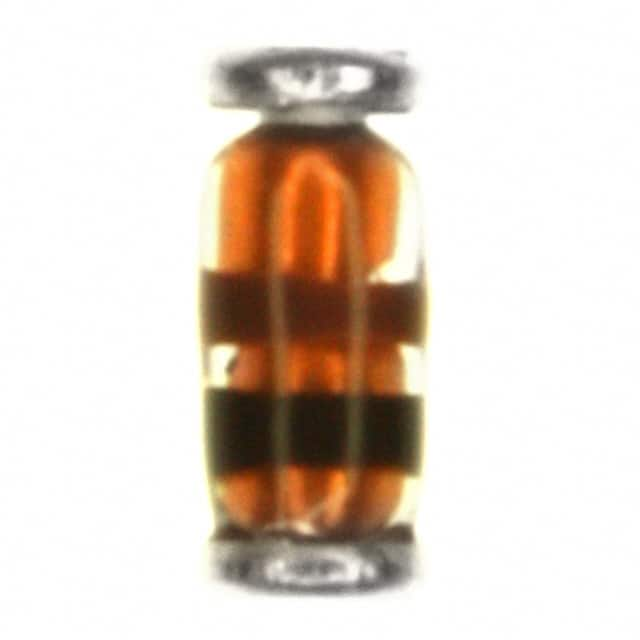Viz Specifikace pro podrobnosti o produktu.

RLZTE-117.5C
Product Overview
Category
RLZTE-117.5C belongs to the category of electronic components, specifically within the realm of voltage regulators.
Use
It is primarily used to regulate voltage in electronic circuits and devices, ensuring a stable and consistent power supply.
Characteristics
The RLZTE-117.5C is known for its high precision and efficiency in voltage regulation. It is designed to operate within specific parameters, providing reliable performance.
Package
The RLZTE-117.5C comes in a compact and durable package, suitable for integration into various electronic systems.
Essence
The essence of RLZTE-117.5C lies in its ability to maintain voltage stability, contributing to the overall functionality and longevity of electronic devices.
Packaging/Quantity
Each package of RLZTE-117.5C typically contains multiple units, depending on the supplier and intended usage.
Specifications
- Input Voltage Range: 4.5V to 28V
- Output Voltage: 1.175V
- Maximum Output Current: 100mA
- Operating Temperature Range: -40°C to 125°C
- Package Type: SOT-23
Detailed Pin Configuration
The RLZTE-117.5C features a standard SOT-23 pin configuration with three pins: 1. Input (VIN) 2. Ground (GND) 3. Output (VOUT)
Functional Features
- Precise Voltage Regulation: Ensures a stable output voltage under varying input conditions.
- Low Dropout Voltage: Minimizes power loss and enhances efficiency.
- Overcurrent Protection: Safeguards the device and connected circuitry from excessive current flow.
Advantages and Disadvantages
Advantages
- High Precision: Provides accurate voltage regulation for sensitive electronic components.
- Compact Size: Enables easy integration into space-constrained designs.
- Overcurrent Protection: Enhances reliability and safety in operation.
Disadvantages
- Limited Output Current: May not be suitable for applications requiring higher current outputs.
- Temperature Sensitivity: Performance may be affected at extreme temperature ranges.
Working Principles
The RLZTE-117.5C operates based on the principle of feedback control, where it continuously adjusts its internal circuitry to maintain the specified output voltage regardless of variations in the input voltage.
Detailed Application Field Plans
Automotive Electronics
In automotive electronics, the RLZTE-117.5C can be utilized for voltage regulation in various control modules and sensor circuits, ensuring stable operation across different operating conditions.
Consumer Electronics
Within consumer electronics, this component can be integrated into portable devices, such as smartphones and tablets, to maintain consistent power delivery to critical components.
Industrial Automation
In industrial automation systems, the RLZTE-117.5C can contribute to the stability and reliability of control systems, supporting smooth operation in manufacturing environments.
Detailed and Complete Alternative Models
- LM317: A widely used adjustable voltage regulator suitable for various applications.
- LT1086: Known for its high current output capability and low dropout voltage, ideal for demanding electronic systems.
In conclusion, the RLZTE-117.5C serves as a crucial component in maintaining stable voltage levels within electronic systems, offering precise regulation and protection features. While it has specific limitations, its advantages make it a valuable choice for diverse applications in the field of electronics.
Word Count: 526
Seznam 10 běžných otázek a odpovědí souvisejících s aplikací RLZTE-117.5C v technických řešeních
What is RLZTE-117.5C?
- RLZTE-117.5C is a high-performance resistor designed for use in technical solutions requiring precise resistance and stability.
What are the key features of RLZTE-117.5C?
- The key features include high precision, low temperature coefficient, and excellent long-term stability, making it suitable for demanding technical applications.
In what technical solutions can RLZTE-117.5C be used?
- RLZTE-117.5C can be used in precision measurement equipment, industrial control systems, power supplies, and other applications requiring accurate resistance values.
What is the temperature range for RLZTE-117.5C?
- RLZTE-117.5C has a wide operating temperature range, typically from -55°C to +155°C, ensuring its suitability for various environmental conditions.
How does RLZTE-117.5C contribute to system reliability?
- RLZTE-117.5C's low temperature coefficient and long-term stability help maintain consistent performance over time, enhancing overall system reliability.
Are there any special considerations for integrating RLZTE-117.5C into a technical solution?
- It is important to ensure proper thermal management and adherence to recommended mounting techniques to maximize the performance of RLZTE-117.5C.
Can RLZTE-117.5C be used in high-frequency applications?
- Yes, RLZTE-117.5C is suitable for high-frequency applications due to its stable characteristics and low parasitic effects.
What are the standard package sizes available for RLZTE-117.5C?
- RLZTE-117.5C is available in various standard package sizes, including surface mount and through-hole configurations, providing flexibility for different design requirements.
Does RLZTE-117.5C require any special calibration or adjustment after installation?
- No, RLZTE-117.5C is designed to provide accurate resistance values without the need for additional calibration or adjustment once installed.
Where can I find detailed specifications and application notes for RLZTE-117.5C?
- Detailed specifications and application notes for RLZTE-117.5C can be found in the product datasheet and technical documentation provided by the manufacturer.

